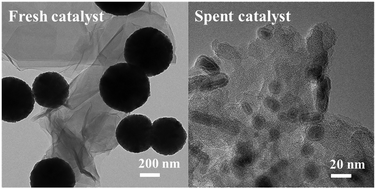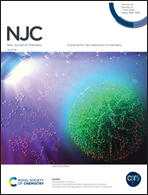Structural evolution of large Fe3O4 microspheres on graphene oxide for efficient conversion of syngas into α-olefins†
Abstract
Synthesized large porous Fe3O4 microspheres of about ∼500 nm located on graphene oxide (GO) could evolve into much smaller iron carbide nanocapsules of about ∼10 nm, which exhibit excellent performance for the production of α-olefins. The formation of small iron carbide nanocapsules is driven by the growth of carbon nanofibers (CNFs) to induce stress over the large Fe3O4 microspheres.



 Please wait while we load your content...
Please wait while we load your content...